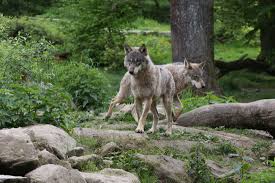Walrus are thought of as an arctic species, and indeed this is where they are found in their greatest numbers. However, they once had a greater range. Walrus have been extinct here for 3000 years, however the UK is part of their natural range, if an extreme southerly point.
The UK has had much positive impact on conservation around the world, so why keep culling badgers despite the evidence?
Research done in the UK though not published (despite being completed 2 years ago) clearly shows that badgers are highly unlikely to infect cattle.

Iberian Lynx continues to recover
Back in 2002 there were only 94 Iberian lynx left in the wild. This wild cat had declined for a number of reasons, unfortunately all down to humans.

The main threat to Iberian lynx was the loss of their main prey. Back in 1952 a doctor, fed up of rabbits overrunning his garden, introduced Myxomatosis. Myxomatosis is an illness, which kills rabbits. Within 2 years this illness had spread across Spain, and eventually went on to reduce the population by 95%.
Continue reading “Iberian Lynx continues to recover”Bears do have close encounters with people, however sensible behaviour makes this interesting for both
The bears in France are often talked about like a problem child. However in actual fact that is not what they are like at all.
Bears are omnivores, and as such while they spend much of their time eating berries or roots they are capable of scary bursts of speed. Bears have been filmed running in excess of 35 mph, which means that even at his top speed a bear could catch up with Usain Bolt. More to the point, while better suited to sprints, bears can keep up an impressive speed for a significant distance – certainly further than a human could. This means, that while for much of the year they are herbivores, they are highly intelligent opportunistic hunters, and therefore cannot be relied upon to act in a certain way.
As with many other large mammals, they view children under 10 as essentially relatively harmless – meaning that small children should not be alone in bear country. Attacks on humans – even small children, are rare as with chimpanzees and wolves, however they are not unheard of.
Here is a video from a few years ago. A man had gone for a walk in the mountains with his son. where they encounter a bear at close range. Just remember that this mountain range is roughly 270 miles long and 80 miles wide (at its widest) covering over 7000 square miles (just a bit smaller than wales) and within this mountain range there are 43 bears. These all fall within 5000 square km (just under 2000 square miles) but this means that bears are rare and being shy generally stay out of site. Furthermore, bears are most active between dusk and dawn so seeing one in the middle of the day is rare.
Continue reading “Bears do have close encounters with people, however sensible behaviour makes this interesting for both”Wildcats set to return to southern England 150 years since their extinction in England and Wales
Once common across the whole of the UK, they were hunted to extinction. Currently, just a handful remain in Scotland. While interbreeding between wildcats and feral domestic cats is normally rare, in the current situation feral cats outnumber wildcats 1000 to one, and as such the wildcat is essentially extinct.

The farmer who is looking to reintroduce them, currently has 6 pairs, which he is hoping to increase to 150 individuals and to start reintroducing perhaps as early as next year.
Continue reading “Wildcats set to return to southern England 150 years since their extinction in England and Wales”Pine martens released near Bangor, Wales
Despite the fact that British citizens have done much good work towards to conservation of wildlife and wilderness in the world, we have been less successful in the UK. Having largely eradicated a small arboreal predator from much of the UK, we then decided to introduce the grey squirrel from the USA.

Spending more time on the ground, and being far less agile than their red smaller cousins, grey squirrels cannot coexist with pine martens.
Continue reading “Pine martens released near Bangor, Wales”Sperm does not swim how we thought
It seems incredible, that despite the number of scientist working in the world today, and the number that have worked over human history, there are still important discoveries being made.
Continue reading “Sperm does not swim how we thought”On pure numbers of fatalities (not to mention cost, simplicity and and health of our ecosystems), wolf reintroduction is a no-brainer
In the half a century running up to the year 2002, there are only 8 recorded fatalities from wolf attacks across the whole of Europe and western Russia. Also when thinking about this number we need to remember that the majority of these sorts of occurred in parts of the world where there are many wolves such as Western Russia.

The Daily Mail is claiming blue hydrogen is better fuel for cars: let’s see if it is (hint of course not)
As in the USA, some of the UK newspapers have an illogical hatred of electric cars. Perhaps chief amongst them, in the UK, is the Daily Mail. Now, I’m unsure what it’s problem is, but this article is littered with errors.
Continue reading “The Daily Mail is claiming blue hydrogen is better fuel for cars: let’s see if it is (hint of course not)”A second attempt to introduce lynx into Northumberland is being proposed
The UK has been predator free (at least large predators that can threaten humans and have to regularly kill to survive) for roughly 300 years. Wolves disappeared around 300 years ago, bears are thought to have gone extinct around 1,000 years ago and lynx are thought that have gone extinct about 1,300 years ago.

